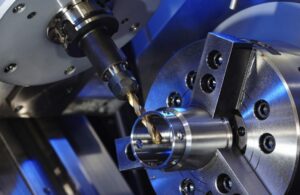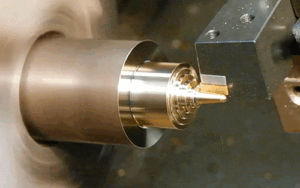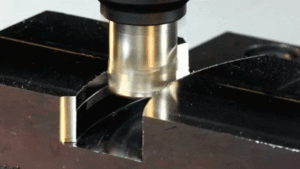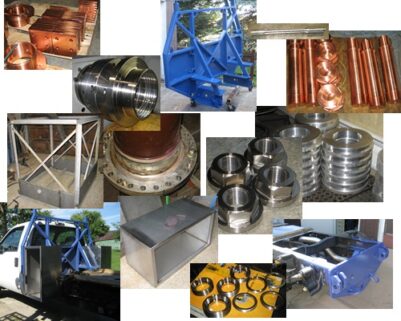
- Machining Services – CLICK HERE:
- Swiss Machining (Swiss Turn)
- Centerless Grinding
- Precision Machining
- Plastics and Composite Machining
- Videos – Machining Processes – Click on Video Links Below
Delrin Composite Machining, CNC Router
Multi-Spindle Screw Machining
Turning Operations: Operations that rotate the workpiece as the primary method of moving metal against the cutting tool. Lathes are the principal machine tool used in turning. Turning not only is used for cutting metal but also for threading.

Drilling Operations: Operations in which holes are produced or refined by bringing a rotating cutter with cutting edges at the lower extremity into contact with the workpiece. Drilling operations are done primarily in drill presses but sometimes on lathes or mills. Properly drilled holes are required before threading operations can take place.
Milling Operations: A cutting process that uses a milling cutter to remove material from the surface of a work piece. The milling cutter is a rotary cutting tool, often with multiple cutting points. As opposed to drilling, where the tool is advanced along its rotation axis, the cutter in milling is usually moved perpendicular to its axis so that cutting occurs on the circumference of the cutter. As the milling cutter enters the work piece, the cutting edges (flutes or teeth) of the tool repeatedly cut into and exit from the material, shaving off chips (swarf) from the work piece with each pass. The cutting action is shear deformation; material is pushed off the work piece in tiny clumps that hang together to a greater or lesser extent (depending on the material) to form chips. This makes metal cutting somewhat different (in its mechanics) from slicing softer materials with a blade. Milling operations are a process in which the cutting tool rotates to bring cutting edges to bear against the workpiece.
Typical Milling Operation:

Grinding Operation: The final category of machining techniques. This relatively simple process involves using a stone-grinding wheel to shape or polish metal. This technique may be used to sharpen a metal hand tool or to give metal building materials a satin finish or super fine finish.
An unfinished workpiece requiring machining will need to have some material cut away to create a finished product. A finished product (the manufacturing of a completed part) would be a workpiece that meets the specifications set out by engineering drawings or blueprints. For example, a workpiece may be required to have a specific outside diameter or finish. Both a lathe and a grinding machine are considered tools that can be used to create that diameter by rotating a metal workpiece, so that a cutting tool can cut metal away, creating a smooth, round surface matching the required diameter and surface finish.
- Material Types – CLICK HERE
PLEASE CALL US FOR QUESTIONS OR A QUOTE: (916) 202-1104 TOLL FREE FAX LINE: (866) 265-0011 or Email Us
